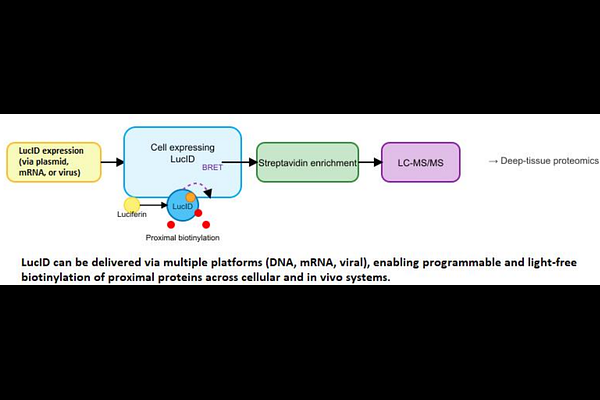LucID: A Self-Activating Bioluminescent Biotin Ligase for Light-Free Proximity Labeling in Deep Tissues

LucID: A Self-Activating Bioluminescent Biotin Ligase for Light-Free Proximity Labeling in Deep Tissues
Taheri Kal-Koshvandi, A.
AbstractMapping protein protein interactions (PPIs) in living systems is critical for understanding dynamic biological processes. While proximity labeling enzymes like LOV.TurboID and APEX2 are widely used, their dependence on external light, reactive chemicals, or large fusion domains limits in vivo applications, especially in deep tissues. Here, we introduce LucID (Light-free Unifying Catalytic Integrated Domain) a compact, self-contained proximity labeling system that functions independently of light or external ROS. LucID was engineered by embedding a minimal catalytic motif derived from TurboID into a NanoLuc scaffold, preserving bioluminescence while enabling spatially confined biotinylation. Upon luciferin addition, LucID leverages BRET (bioluminescence resonance energy transfer) to uncage the catalytic site and activate biotin transfer. With a molecular weight of approximately 23.7 kDa (40% smaller than TurboID), LucID is optimized for delivery via mRNA-LNP platforms. Its modularity and light-independent activation make it a unique tool for real-time interactome mapping in live cells and deep tissues. LucID introduces a new paradigm in proximity labeling: compact, luminescent, and chemically programmable. By integrating catalytic motifs into a light producing scaffold, LucID enables temporally precise, spatially confined interactome mapping in challenging biological contexts. This innovation holds promise for single cell proteomics, in vivo interaction studies, and next-generation bioimaging tools.